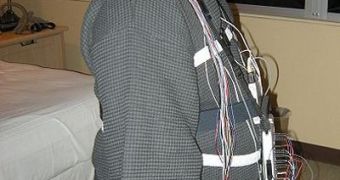Sleep apnea is one of the most disrupting and widespread sleep disorders in the world today. It manifests itself by blocking the airways of the patient during sleep, depriving the brain of oxygen, and starving the rest of the body as well. It leads to fatigue in the short run, but it also causes long-term side-effects, including death. Now, experts at ImThera Medical announce the creation of a new device to treat the condition, one that relies on less extreme measures than other therapies do.
The most used course of treatment for sleep apnea is Continuous Positive Airway Pressure (CPAP). Patients are hooked up to an oxygen mask, which forcefully pushes air down their respiratory pathways. While this works for some people, others (roughly half of the diagnosed patients) can't stand it, as the device is bulky and cumbersome. Other methods include cutting a piece of the soft palate, so as to make more room for air flows, or using devices that physically change the position of the jaw during sleep. In more radical therapies, the jaw itself is broken, and then set in a different position.
Marcelo Lima, the president of ImThera Medical, explains that the new device takes a new approach, one that hasn't yet been fully researched in the academic community. The device features an electrode, which is wrapped around the large hypoglossal nerve, which is located in the tongue. During sleep, the device delivers small electrical shocks in up to six separate spots on the nerve, with the sole purpose of preventing the tongue from collapsing and blocking the airways during sleep. The muscles on the sides of the tongue, and those underneath, are made to stiffen and go flat, which prevents the organ from receding and blocking airflows.
The new treatment is currently undergoing a small, clinical trial in Europe, which will determine its viability in real-life scenarios, Technology Review reports. The electrode is powered up by a Zippo lighter-sized rechargeable pulse generator, which is implanted in the chest, above the pectoral muscle. A small wire goes all the way up the neck, under the skin, and connects to the electrode in the tongue. A large trial is scheduled to begin in mid-2010 in the United States, where more than four percent of the population is estimated to be suffering from sleep apnea.

 14 DAY TRIAL //
14 DAY TRIAL //